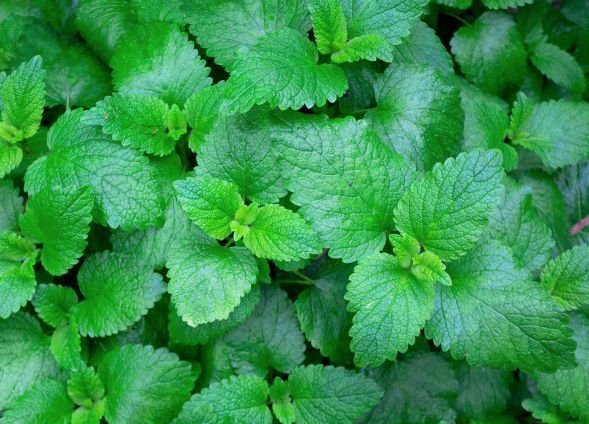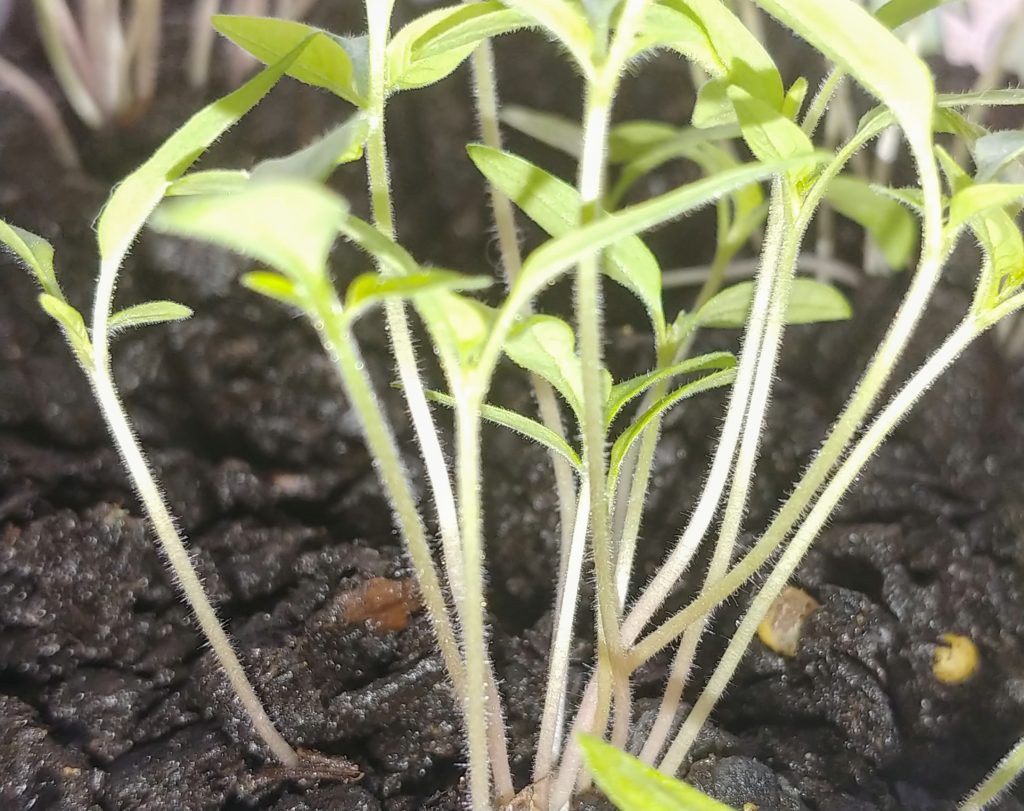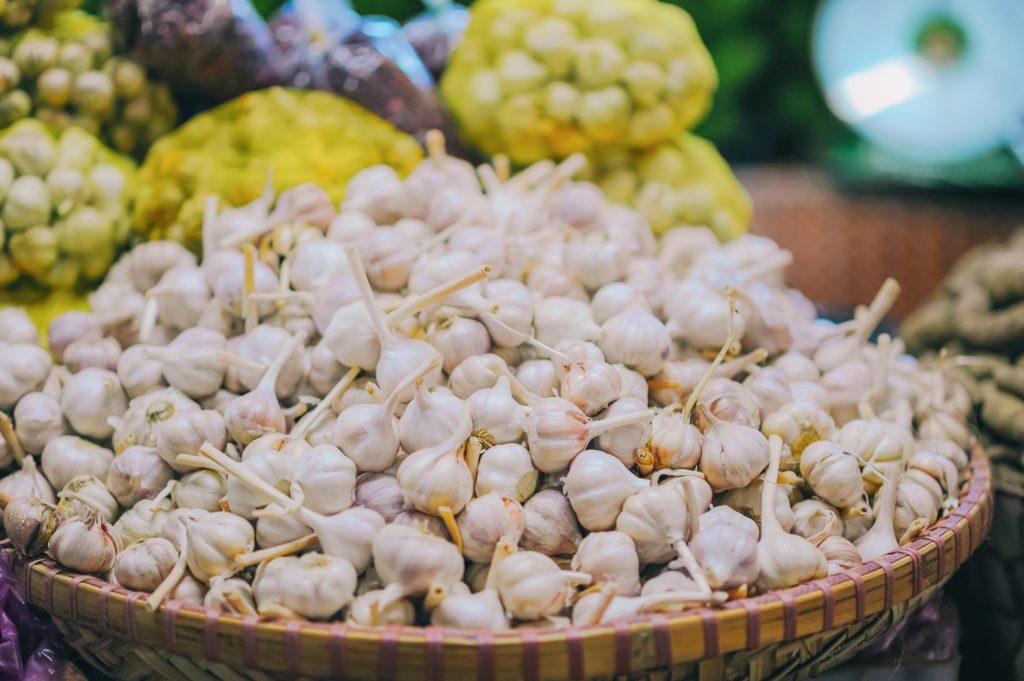Basil is an incredibly easy plant to grow from seeds and keep around all year long. But, in order to be successful in keeping it alive, you must prune it. Here, we’ll walk through the simple steps on how to grow and nurture basil the right way.
This tender herb is by far my most favorite to use in the kitchen. I love growing basil in a pot on my windowsill throughout the year and enjoying the freshest and brightest flavors. The smell is just incredible and there are so many ways to use this delicious ingredient. Ah, I just love it!
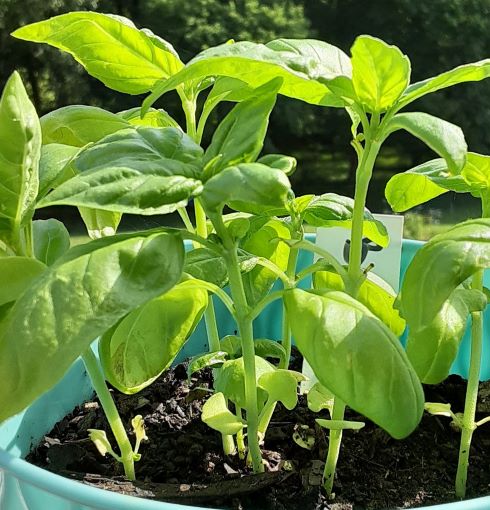
How to Grow Basil
As mentioned above, it’s incredibly easy to grow outdoors or inside. With regularly watering and moderate sunlight, you can absolutely grow it wherever you live.
While it may seem pretty straightforward, it is important to point out that there is a “wrong way” when it comes to basil growing.
Your intentions may be good as you try to grow your plant tall and big, however, that isn’t our objective. What you do want is a short, bushy, leafy plant. If you disregard pruning, or do it completely wrong, you can either kill it, or bring it to seed.
Let’s avoid killing it.
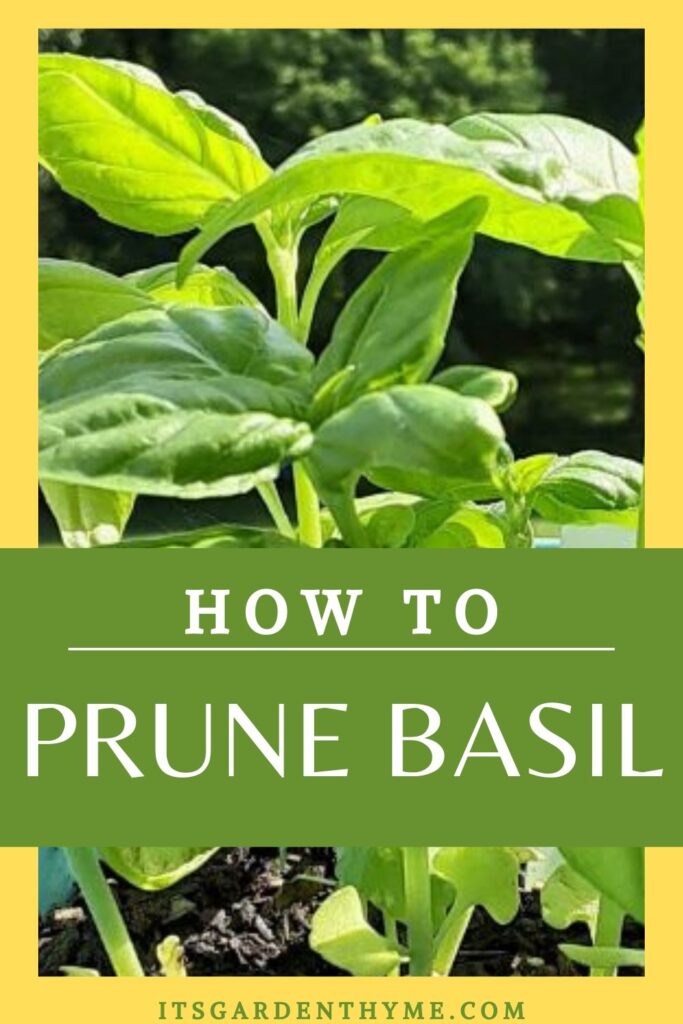
How to Plant Basil in a Pot
Growing basil in containers is super easy and requires only a few simple steps.
- First, you need a 6 inch container with drainage holes and a water-catching tray. There are rather standard herb pots out there that you can use. Get as fancy or as basic as you wish with the pots. I like to get all kinds of containers to add a little decor to my space!
- Clean the container well and then add organic garden soil three quarters of the way to the top.
- Next, add your basil seeds, and then cover the rest with the soil. Water well and place in a sunny window, or in an area that receives good sunlight.
- Water regularly, about once a day or when the top layer of soil starts to look a little dry.
When to Prune
Did you know that pruning basil is directly related to its flavor? It’s true! For the boldest and best taste, prune your plant regularly, or about every three weeks, depending on how often you use it.
If you allow the plant to grow too tall, the stems will become woody and tough. And those delicious leaves will be very bland or bitter tasting.
It’s best practice to regularly pinch back because the goal is to have a nice bushy plant, rather than a tall skinny one. It’s fine to pluck off a leaf here and there if you need it to cook, however being deliberate in your routine will help the plant flourish.
Whenever you pinch or prune it back, it will sprout new growth in its place. By not regularly trimming, you are actually stunting its chance to grow to its full potential.
Using clean, sharp shears, you will want to start trimming when it grows to approximately 6 inches tall and produces multiple leaves.
Pruning Basil in Pots
If your basil is growing indoors, and bound in a container, you don’t need to aggressively prune it. Chances are, if you growing basil in a pot, you’re using it often!
Using the herb often is actually enough of a ‘prune’! Pinching off the leaves regularly is good enough.
How to Prune
If you’re not familiar with the process, then this is very valuable information and very simple to follow.
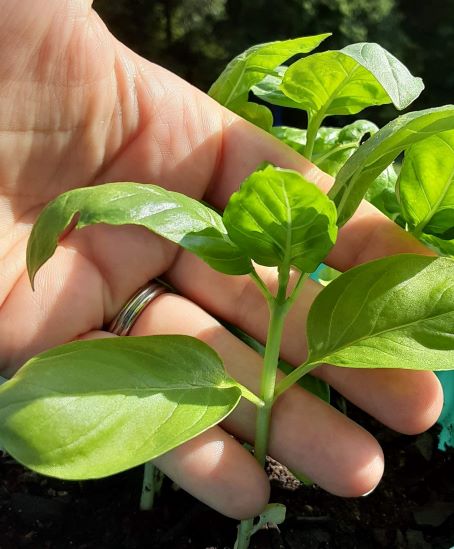
You will 100% reap the rewards with enough basil for 5000 pizzas. Remember though, you don’t always need to do a technical trim and can pick off a leaf or two as you need them.
You will know it’s time to trim when you see three or four sets of leaves growing from the main stem. Look at the photo above and you will see that there are two definitive sets of leaves.
Cut the stem right above the first or second node where it begins to branch out. Look at the photo below to see what I mean.
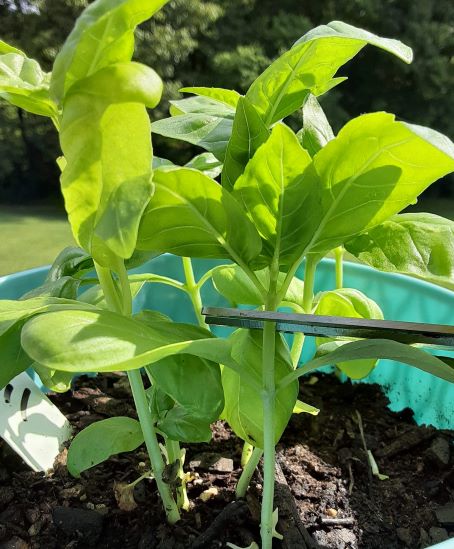
You can cut off as many stems as you want but be sure to leave at least one node from the entire plant to allow it to grow new branches.
With basil, when referring to a node, it is the point on a stem where you see two leaves sprouting in opposite directions from each other. There will also be a little round nub on the main stem those leaves come out of.
After cutting right above the node, your plant will sprout new growth in that spot as the leaves underneath grow nice and big.
An easy tip to remember is to trim from the top down and the more stems you pinch, the bushier it will get.
What does ‘bringing it to seed’ mean?
If it grows too tall and the stems start to look and feel rough, don’t fret. You can just wait it out and allow it to grow and bloom flowers before tossing it.
While the leaves won’t be too tasty, keep the plant alive and water it regularly until flowers form. Once the flowers form, you can then harvest the seeds and start a new plant.
To harvest the seeds, you need to be careful as they are super tiny and you don’t want to miss them! Once the flowers are large enough, about 3-4 inches long, snip them off. Then, put them aside and allow them to dry out.
After the flowers have dried, you will then want to crush up the dried out flower heads. After crushing up the leaves, collect those little black seeds. Super easy!
Articles You’ll Love:

